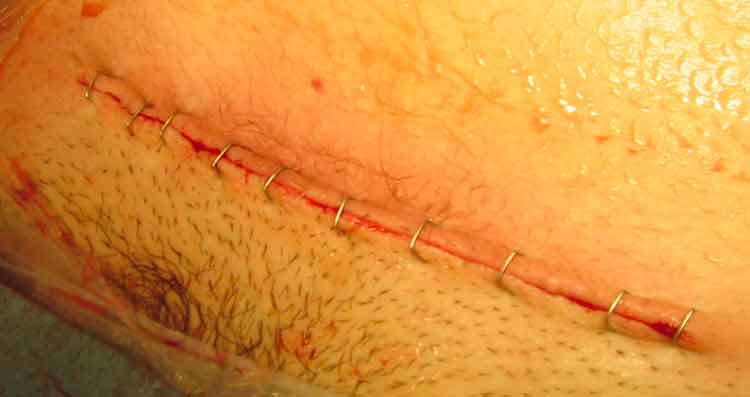There’s no avoiding it. Maternity completely alters you. Some ladies come through maternity with smooth stomaches and unmarked skin yet a lot of us have a couple of mementos like stretch marks, droopy skin, poochy tummies and medical scars. Since more than a 3rd of all babies are delivered by c-section a third of all Mamas have c-section marks. Right here are a couple of Frequently asked questions regarding one of the most common surgical scar around.
Table of Contents
How large is a c-section scar?

Surprisingly small. A lot of baby-heads fit through a 4 to six-inch skin laceration made horizontally simply listed below the pubic hairline. The abdominal muscles are moved apart (not cut through) and a straight incision is made in the uterus. In rare cases, medical professionals make an upright cut from below Mommy’s belly button to the pubic bone. That’s pretty uncommon in the US and most industrialized nations as well as only made use of in extreme emergencies when they do not have time to do the more intricate and less noticeable “bikini” cut. If they do a vertical skin cut, they’re most likely to do a vertical uterine laceration as well.
What do c-section scars appear like after they recover?
Because they’re normally made listed below the pubic hairline, you might not see your mark at all. It’ll look red or pink for a number of months yet at some point it discolors to a pale, flat, slim line. Some ladies create larger, thicker or increased scars compared to others yet they are hardly ever really apparent. In fact, a lot of the bikini-clad women you see at the coastline or pool have c-section scars as well as you never see them.
Can you do anything to urge your scar to recover well?

Consume well so your body has the best nutrients for recovery as well as creating healthy tissues. Keep it clean throughout the preliminary recovery duration to stop infection. Prevent hefty training, housework or any kind of large motions that might extend or irritate the scar for the first six weeks. You can try topical lotions and ointments that have differing success prices for advertising healing.
Why does a c-section scar stop you from having a genital birth with your following birth?
In more than 99% of situations, c-section scars recover well as well as develop strong tissues that knit the uterine cells back together. It’s often strong enough to endure the extending of one more pregnancy and also stress of tightenings. In extremely uncommon instances however, the mark could tear. This is a lot more typical (however still rare) with upright incisions than horizontal ones (which is among the reasons upright cuts typically aren’t done extremely typically). If that mark rips, (called uterine tear), it causes enormous bleeding (hemorrhage) and also is a life threatening emergency situation for both mom and also infant.
Yet if uterine rupture is so rare, why will not many doctors as well as healthcare facilities do genital births after cesarean (VBAC)?
Due to the fact that, they can not afford to take the threat even though the American College of Obstetricians and Gynecologists state it’s normally secure. Insurance coverage service providers will not cover them (or make it crazy-expensive) if they do VBACs. ACOG says regarding 60-80% of women that try labor after a c-section successfully provide their infants vaginally. Presently, only concerning 8% of births are by VBAC. Scars are usually rather strong however obviously, insurance companies and obligation dangers are stronger.
Exactly what are various other problems with c-section scars?
Typically none, once it has recovered appropriately. In many cases though, it changes the way the placenta grows in the following pregnancy. The more c-sections she has, the higher a female’s risk.
Ladies who have a scar on their womb are more likely to produce placenta previa. That’s when the placenta broadens over the open to her cervix. There’s nothing else method to firmly provide a baby vaginally if there’s a placenta in the means. Placenta previa is gotten in touch with elevated risk for severe bleeding, shock, blood transfusions, along with hysterectomies.
Placenta accreta is likewise extra typical in a marked uterus. That’s when the placenta grows with the scar cells and/or attaches to the uterine muscular tissue. This raises threats for premature delivery and also blood loss during pregnancy, labor as well as birth. It also makes it hard for the placenta to separate from the uterine wall after birth and can create hemorrhage. In rare cases when physicians have a really difficult time separating the placenta from the uterine wall, they just need to get the uterus.
Will my doctor utilize the same scar for my following c-section?
Yes, almost every time.
If you’re amongst the growing percentage of ladies that will have (or have actually had) a c-section, the chances remain in your support you’ll be simply great. Yes, c-sections boost your dangers for difficulties but they’re still a really risk-free operation most of the moment. They’re the most often performed surgery here in the US and that indicates there are a lot of marks available. You remain in excellent firm.
Exactly what does a C-section scar look like?
First, the essentials: In mostly all cases in the USA, the cut will certainly be a small– around 4 to 6 inches– straight line that traces well below your belly button, to ensure that only the definitely skimpiest of swimwear bases would ever before disclose it. My own scar is practically 4 1/2 inches throughout, and I wonder that 2 full-term children appeared of it.
In very rare cases– mostly in emergency situation situations– your medical professional might make a vertical laceration instead.
Post-op C-section scar care
Prior to you’re discharged from the hospital (typically around four days, relying on your insurance policy coverage and also the specifics of your shipment), your physician will get rid of the staples from your cut; if you had sutures, they’ll liquify on their own. Your C-section scar will be covered with a paper tape-like item referred to as Steri-Strips. These will diminish by themselves in about a week– do not mess with them prior to that! They’re keeping your wound shut as well as clean.
While your scar is fresh– normally for the first two weeks– you’ll be instructed not to raise anything much heavier than your baby so as not to disturb the healing process.
Throughout this time around, you could bath easily utilizing a mild soap and also without scrubbing the location; it’s great to get the laceration (and the Steri-Strips) wet. But you should stay clear of submerging your scar in a tub (or swimming) in the early days.
At this moment, your mark will likely be puffy, and the location around it will be pink. However if you notice hemorrhaging or exuding from your cut site, reddened sides, or have a fever greater than 100.4 °, call your doctor immediately, as these might be signs of infection.
C-section scar lotions
You could be eager to attempt vitamin E or over-the-counter creams like cocoa butter in an effort to decrease the look of your scar. Go for it– yet handle your assumptions.
” There have actually not been any kind of good clinical research studies showing that any of the non-prescription preparations are better than simply correct injury care,” says Rajiv B. Gala, M.D., the American College of Obstetricians and also Gynecologists’ young doctor at huge. “Most of the assumptions presented in on the internet advertisements are best-case circumstances and also may not be reasonable in typical instances.”
You should additionally be mindful to avoid specific cosmetic creams if you’re nursing. “There are things that will service marks and also stretch marks, like Retin-A, but these should be administered after pregnancy and also breastfeeding,” claims Shawn Tassone, M.D., an Austin, Texas-based ob-gyn as well as author of the books Hands Off My Stomach! as well as Spiritual Maternity.
Your fully healed C-section scar
After around 6 weeks, your scar will certainly be recovered– implying you’ll likely be able to resume all normal activity without disturbing it. Giving yourself a minimum of 6 weeks of healing time “allows the laceration lines to mature, to ensure that when strenuous activities are carried out, the stability is not compromised,” claims Dr. Gala.
And although the honesty of the scar might be undamaged, you may still note that it has transformed a reddish-purpleish color. Do not stress– that’s completely typical The shade will continue for about 6 months prior to fading to a much less noticeable creamy colored line, claims Dr. Tassone.
In much less usual cases, your mark might have an increased attribute, referred to as a keloid. Doctors typically aren’t sure what creates keloids “but there is certainly an active reaction to the recovery procedure that triggers the scar to expand outside its original borders,” says Dr. Tassone.
Some medical professionals try to respond to the result by injecting cesarean injuries with a steroid called Kenalog at the time of surgical treatment, but the results are blended– as are therapies such as lasers as well as shots of interferon.
Back to normal.
Since I’m 4 months postpartum, I have a mild keloid, yet no person will certainly ever should see it. It’s also still reddish-purplish, but I anticipate that will certainly even more fade in the coming months.
Generally, I’m comfortable with my scar’s development. And also unlike my stretch marks (womp, womp), it’s a pregnancy memento that actually makes me proud! It’s a suggestion daily of the healthy youngsters for which I’m so happy– as well as the superwoman feat of pregnancy and delivery that brought them into this world.
